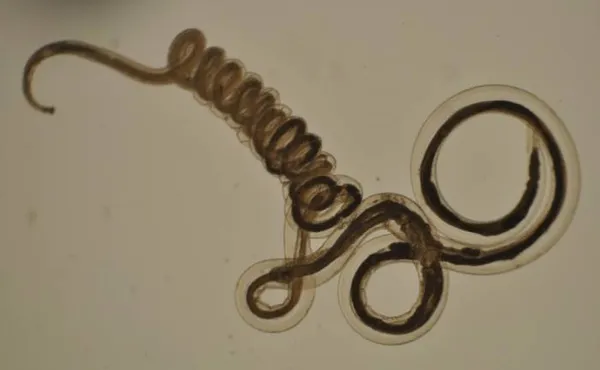Nematodirus
Nematodirus, also known as nematodirosis, is a significant disease affecting young lambs, particularly those grazing on pastures previously grazed by lambs. This disease is caused by the parasitic worm Nematodirus battus, which can lead to severe health issues and even death in lambs if not managed properly.

Symptoms and diagnosis of Nematodirus 🩺
Symptoms
- Profuse watery diarrhoea, often leading to faecal staining of the wool around the tail and perineum.
- Lambs appear dull and depressed, stop sucking, and rapidly develop a gaunt appearance.
- Obvious dehydration and significant weight loss.
- In severe cases, up to 5% of lambs may die within a few days if untreated.
Diagnosis
Diagnosis is primarily based on clinical findings of severe diarrhoea in lambs grazing infested pastures. Faecal worm egg counts are not helpful because the acute disease is caused by developing larvae and adults before they start laying eggs. Postmortem examination may reveal large numbers of developing larval stages and adults within the small intestine.
How to treat Nematodirus in sheep 💊
Immediate treatment involves moving sheep from infested pastures and administering anthelmintics as directed by a veterinary surgeon. Commonly used anthelmintics include benzimidazoles, levamisole, and avermectins/milbemycins. It's crucial to follow the correct dosage and administration guidelines to ensure effectiveness.
How to prevent Nematodirus in sheep 🛡️
Grazing Management
Prevention is largely based on avoiding pastures grazed by lambs during the previous grazing season. Adult sheep are highly resistant to infection and only lambs produce significant numbers of eggs. Rotational grazing and avoiding heavily infested pastures can significantly reduce the risk of infection.
Environmental Control
The infective larval stage of Nematodirus is very resistant to desiccation and low temperatures, allowing it to survive the winter on pasture. After a period of cold exposure, the larvae hatch once the maximum environmental temperature exceeds 10°C over several days. Monitoring environmental conditions and using disease forecasts can help in planning anthelmintic treatments.
Anthelmintic Administration
Anthelmintic treatments should be guided by environmental temperature and disease forecasts. Typically, for lambs born from mid-March onwards, treatments are given three weeks apart during May. In high-risk years, treatments may extend into June.

